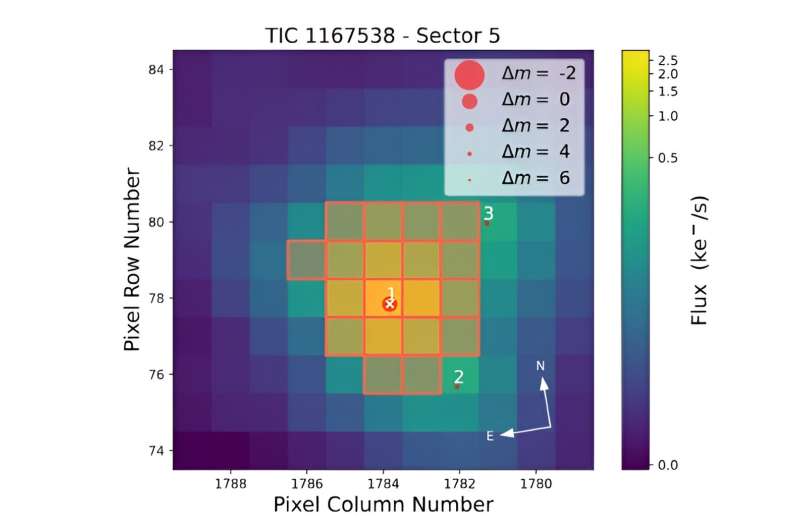May 23, 2024 report
This article has been reviewed according to Science X's editorial process and policies. Editors have highlighted the following attributes while ensuring the content's credibility:
fact-checked
preprint
trusted source
proofread
New Saturn-mass exoplanet detected by astronomers

Using NASA's Transiting Exoplanet Survey Satellite (TESS), an international team of astronomers has discovered a new Saturn-mass planet orbiting a solar-type star known as TOI-2447. The finding was reported in a research paper published May 12 on the pre-print server arXiv.
To date, TESS has identified more than 7,100 candidate exoplanets (TESS Objects of Interest, or TOI), of which 445 have been confirmed. Since its launch in April 2018, the satellite has been conducting a survey of about 200,000 of the brightest stars near the sun with the aim of searching for transiting extrasolar planets—ranging from small, rocky worlds to gaseous giants.
A group of astronomers led by Samuel Gill of the University of Warwick, UK, now reports the confirmation of another TOI monitored by TESS. They detected a transit signal on the light curve of TOI-2447, which turned out to be of planetary nature. The newly discovered exoplanet received designation TOI-2447 b, or NGTS-29 b as data from the Next-Generation Transit Survey (NGTS) were also used to confirm its planetary status.
"TOI-2447 b was identified as a transiting exoplanet candidate from a single transit event of 1.3 percent depth and 7.29-hour duration in TESS Sector 31 and a prior transit event from 2017 in NGTS data," the researchers explained.
The newfound exoplanet has a radius of 0.86 Jupiter radii and its mass is 0.39 Jupiter masses. It orbits its host every 69.34 days, at a distance of 0.35 AU from it. The equilibrium temperature of TOI-2447 b was estimated to be 414 K, therefore generally lower than the majority of planets discovered by TESS.
The parent star TOI-2447 (also known as TIC-1167538) is a bright dwarf of spectral type G9V. It has a size and mass comparable to that of the sun, and its metallicity is at a level of 0.18 dex. The star is estimated to be 2.1 billion years old and has an effective temperature of approximately 5,730 K.
The researchers also collected strong evidence for additional planets orbiting TOI-2447. They identified a transit signal in the NGTS data not originating from TOI-2447, but most likely from some other transiting object. Moreover, they found evidence in the radial-velocity data from the CHIRON high-resolution echelle spectrometer, suggesting the presence of an outer planet with an orbital period of around 150 days. However, additional observations are needed in order to confirm the planetary nature of these signals.
"We continue to monitor the TOI-2447 with photometry and spectroscopy in order to better characterize these signals and determine the properties of additional planets in the system," the authors of the paper conclude.
More information: Samuel Gill et al, TOI-2447 b / NGTS-29 b: a 69-day Saturn around a Solar analogue, arXiv (2024). DOI: 10.48550/arxiv.2405.07367
Journal information: arXiv
© 2024 Science X Network





















